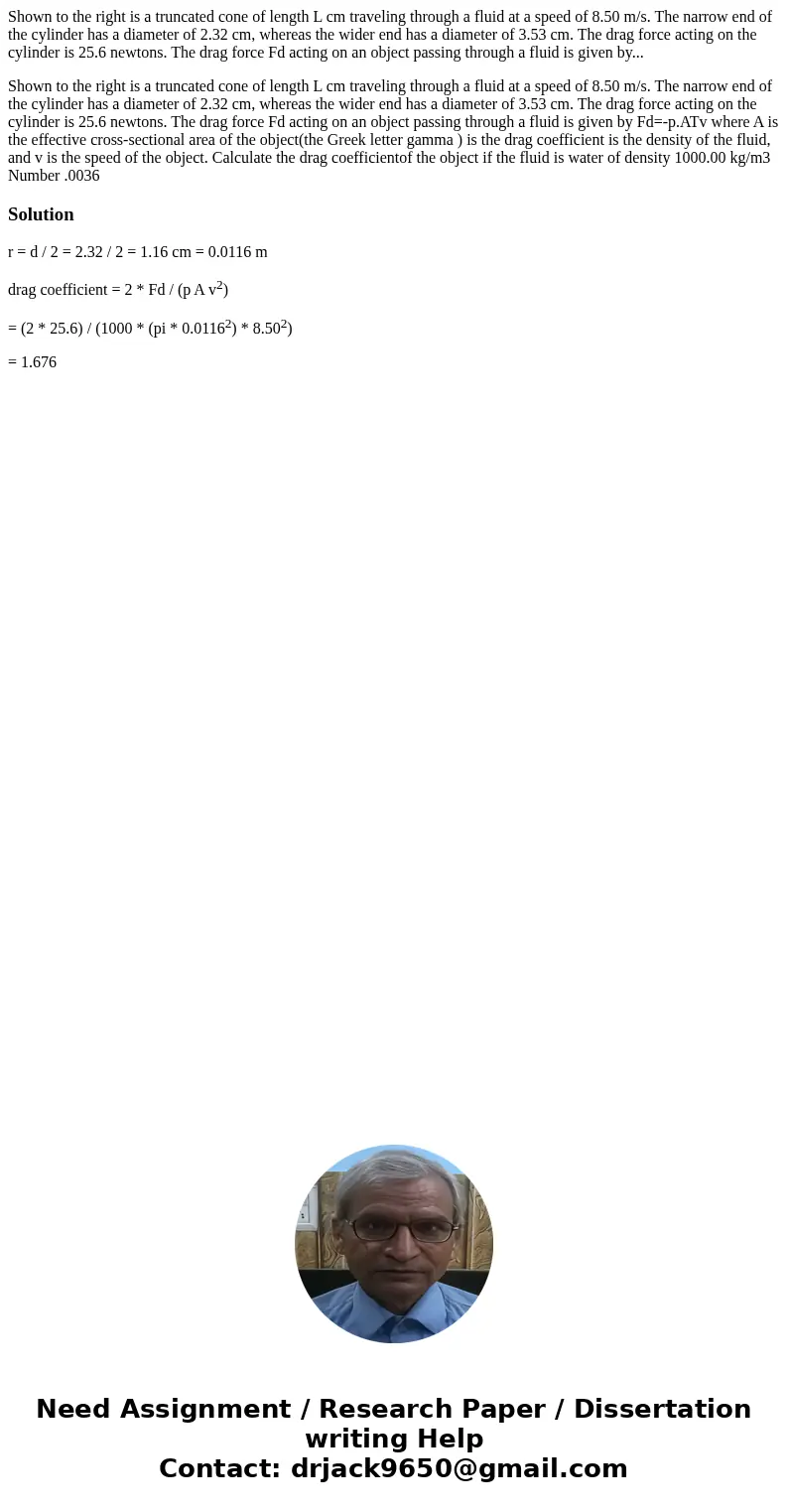Shown to the right is a truncated cone of length L cm travel
Shown to the right is a truncated cone of length L cm traveling through a fluid at a speed of 8.50 m/s. The narrow end of the cylinder has a diameter of 2.32 cm, whereas the wider end has a diameter of 3.53 cm. The drag force acting on the cylinder is 25.6 newtons. The drag force Fd acting on an object passing through a fluid is given by...
Shown to the right is a truncated cone of length L cm traveling through a fluid at a speed of 8.50 m/s. The narrow end of the cylinder has a diameter of 2.32 cm, whereas the wider end has a diameter of 3.53 cm. The drag force acting on the cylinder is 25.6 newtons. The drag force Fd acting on an object passing through a fluid is given by Fd=-p.ATv where A is the effective cross-sectional area of the object(the Greek letter gamma ) is the drag coefficient is the density of the fluid, and v is the speed of the object. Calculate the drag coefficientof the object if the fluid is water of density 1000.00 kg/m3 Number .0036Solution
r = d / 2 = 2.32 / 2 = 1.16 cm = 0.0116 m
drag coefficient = 2 * Fd / (p A v2)
= (2 * 25.6) / (1000 * (pi * 0.01162) * 8.502)
= 1.676

 Homework Sourse
Homework Sourse